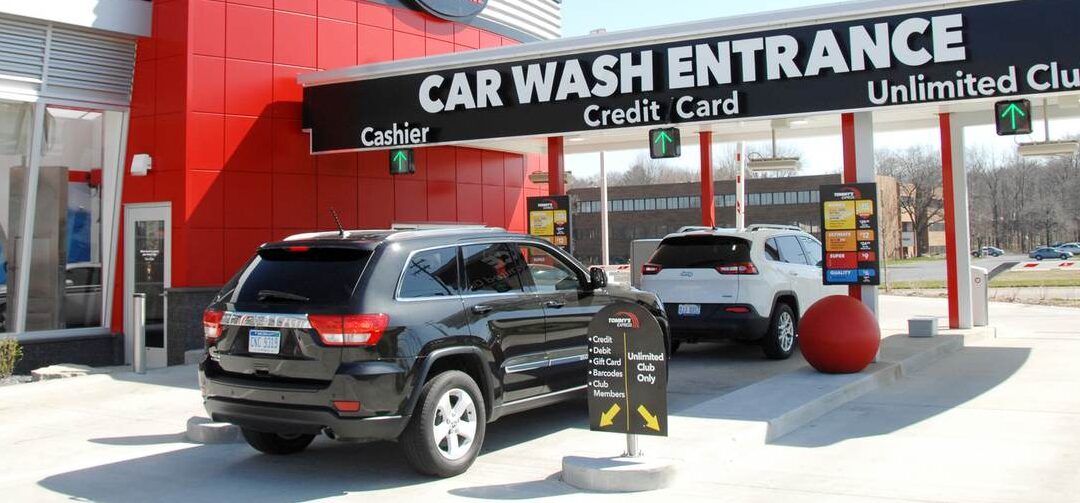Within the multifaceted world of real estate investment trusts (REITs), car wash and gas station REITs present a specialized and increasingly attractive niche. These trusts invest in properties that serve essential automotive needs—namely, fueling, cleaning, and related convenience offerings. The reliable, everyday demand for fuel and vehicle maintenance services provides a compelling foundation for steady cash flow and long-term investor appeal. By combining retail elements with fuel sales and ancillary services, these REITs craft diverse revenue opportunities that distinguish them from more traditional real estate sectors such as office buildings or residential complexes.
With car ownership and transit activity enduring as critical components of modern life, car wash and gas station REITs position themselves as dependable investments in a shifting economic landscape. Understanding the intricacies behind their revenue streams—specifically retail sales, fuel transactions, and supplementary services—offers valuable insight into how these assets generate value and maintain resilience.
Retail Operations
Fundamental to many car wash and gas station sites is the convenience store function, which caters to commuters, travelers, and local customers alike. These retail spaces offer a broad selection of items—from snacks and beverages to basic household goods—turning a quick stop for gas or a car wash into an opportunity for supplementary purchases. This retail segment relies heavily on both location and consumer habits, thriving in high-traffic areas where automobile movement is constant.
The profitability of on-site retail depends on several factors, including store size, product mix, and operational efficiency. A well-curated convenience store can generate sizeable foot traffic, encouraging impulse buys and fostering customer loyalty. Moreover, linking fuel purchases with retail incentives, such as loyalty programs or bundled discounts, enhances the customer experience and encourages repeat business.
Investment decisions within car wash and gas stations REITs often take this synergy into account. Those properties that successfully integrate retail and fuel sales tend to deliver more reliable and substantial earnings, increasing their overall market value and appeal to investors.

The Backbone of Car-Related Real Estate
Fuel remains the backbone of these REITs’ revenue structures. Regardless of fluctuations in prices or short-term supply chain issues, gasoline and diesel continue to constitute an essential commodity for millions of drivers. This demand creates a steady transactional volume that underpins the financial stability of gas station real estate.
Car wash and gas station REITs frequently align with major oil companies or fuel distributors to ensure a consistent supply chain and leverage brand recognition. Such partnerships build consumer trust, which is instrumental in sustaining high-volume sales.
Though fuel sales alone sometimes operate under thin margins, the volume compensates, and the stability often encourages favorable lease terms with tenants operating the retail and fueling stations. Long-term contractual arrangements grant REITs a dependable cash flow, vital for their ability to provide steady dividends to investors.
Moreover, innovation in fuel offerings, such as the inclusion of premium grades and environmentally friendlier options like ethanol blends, fuels additional revenue growth. As consumer preferences and regulations evolve, adapting fuel portfolios becomes necessary to stay competitive and compliant.
Expanding the Revenue Horizon
Beyond retail and fuel, ancillary services add layers of income that enhance the profitability of these properties. Car washes, whether automated or full-service, have gained prominence as a key revenue driver, offering customers convenience and vehicle upkeep in a busy world.
Unlike many retail operations, car washes can yield substantial returns with relatively low labor costs, especially automated systems that run with minimal human intervention. The recurring nature of vehicle cleaning services encourages frequent visits, intensifying cash flow regularity.
Additional services such as automotive repair bays, air pumps, vacuum stations, and ATMs also contribute to the financial viability of these REITs. While each may individually represent a smaller revenue slice, together they create a comprehensive suite of offerings that improve customer engagement and satisfaction. This comprehensive customer service approach solidifies property value and tenant retention.
The emergence of electric vehicle (EV) charging stations at gas stations introduces yet another ancillary income opportunity. As EV adoption accelerates, REITs that proactively incorporate charging infrastructure position their portfolios advantageously for future growth. Charging stations not only attract a new segment of motorists but also increase dwell time, potentially benefiting on-site retail sales.
Investment Appeal and Market Resilience
Car wash and gas station REITs appeal to investors by combining the stability of essential service providers with multiple income avenues. Their mix of long-term leases secured by high-traffic locations instills confidence, while the blend of retail, fuel, and ancillary revenues results in diversified cash flow.
Properties in this category usually benefit from strategic placement along highways, urban centers, or densely populated residential areas—locations where consumer footfall and vehicle traffic remain consistent. These geographic advantages contribute to sustained occupancy and predictable income.
Additionally, many leasing contracts allocate operational responsibilities and costs to tenants, reducing the capital and management burden on the REIT. Triple-net leases, where tenants cover property taxes, insurance, and maintenance, are common. This arrangement further appeals to investors by providing clearer income forecasts and lowering unexpected expenses.
Despite challenges, such as fluctuations in fuel prices or shifts in consumer behavior, the diversified revenue model offers resilience. For instance, even when fuel prices drop and impact margins, retail sales and car wash services can counterbalance income reductions. This range of income sources protects overall portfolio health.
Navigating Regulatory and Market Challenges
Operating within the fuel and automotive care realm exposes these REITs to a variety of regulatory considerations. Compliance with environmental regulations, such as underground storage tank management or emissions standards, requires ongoing attention and investment. Non-compliance not only risks penalties but can result in costly property remediation.
Moreover, safety protocols and zoning restrictions influence operational flexibility. REIT managers must understand and navigate these legal landscapes carefully to avoid disruptions.
Market pressures also loom. The rise of electric vehicles, although promising new opportunities, poses a long-term challenge to traditional fuel retailers. Market leaders in car wash and gas station REITs must therefore be forward-thinking, embracing innovation to stay relevant.
Economic cycles impact consumer spending, which in turn affects ancillary revenue streams. During downturns, discretionary car wash visits or in-store purchases may decline. A diversified revenue model assists in weathering these fluctuations, but strategic planning and capital reserves remain essential.
Technological Integration and the Future Outlook
The future promises a transformation of car wash and gas station REITs, driven by technology and evolving consumer preferences. Digital payment methods, loyalty apps, and real-time inventory management systems are becoming standard, streamlining operations and enhancing customer engagement.
Incorporating data analytics into site management enables REIT operators to optimize product offerings, manage maintenance proactively, and tailor marketing efforts. These innovations boost efficiency and profitability.
The gradual integration of electric vehicle charging infrastructure is set to redefine the fuel station experience. Early adopters among REITs gain a competitive advantage, attracting new demographics and offering new revenue avenues from charging fees or partnerships.
Sustainability initiatives increasingly influence site design and operation, with energy-efficient lighting, water recycling in car washes, and solar-powered amenities becoming common. Aligning with environmental trends fosters goodwill and may open access to green financing options.
Frequently Asked Questions (FAQ) on Car Wash & Gas Station REITs
-
What is a car wash or gas station REIT?
Answer: It’s a real estate investment trust that owns, operates, or leases properties centered on automotive services—primarily fueling stations, convenience stores, and car washes. The REIT collects rent from tenants (often under triple-net leases) and distributes most of its taxable income to shareholders as dividends. -
How do these REITs generate revenue?
Answer: Income comes from three main sources: (a) long-term rental payments on the underlying real estate; (b) percentage-rent agreements tied to on-site retail and fuel sales; and (c) ancillary fees from car washes, EV chargers, ATMs, air/vacuum stations, or maintenance bays. Many tenants cover taxes, insurance, and upkeep, boosting net cash flow to the REIT. -
Are profits highly sensitive to swings in gasoline prices?
Answer: Not directly. While station operators’ margins can tighten when prices spike, the REIT typically earns fixed base rent plus any contracted percentage rent, insulating it from day-to-day commodity volatility. Broad, sustained drops in fuel demand, however, could affect tenant health and future lease renewals. -
How does the rise of electric vehicles (EVs) affect the business model?
Answer: EV adoption poses both risk and opportunity. Reduced gasoline demand could pressure traditional fuel sales, but installing DC fast-chargers introduces a new revenue stream and attracts longer on-site dwell times, boosting convenience-store and food purchases. Forward-looking REITs are already adding EV infrastructure to hedge against the transition. -
What lease structures are most common?
Answer: Triple-net (NNN) leases dominate, requiring tenants to pay property taxes, insurance, and maintenance. Lease terms often range from 10–20 years with built-in rent escalators and multiple renewal options, giving the REIT predictable, inflation-protected cash flow. -
What are the primary risks for investors?
Answer: Key risks include tenant concentration (large operators may represent outsized rent share), environmental liabilities (e.g., underground storage tanks), regulatory changes, local zoning restrictions, and longer-term shifts in transportation trends. Proper due diligence on site compliance and tenant credit quality is essential.










